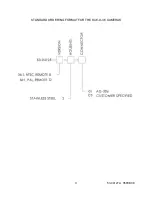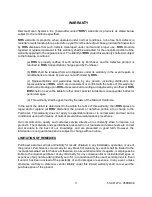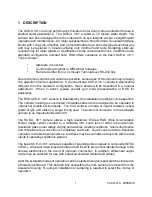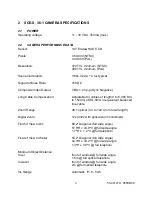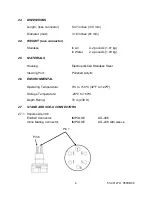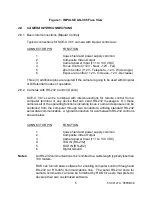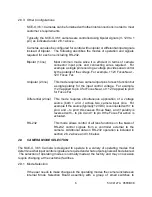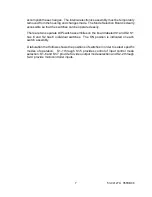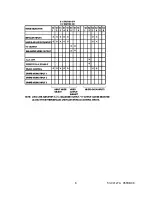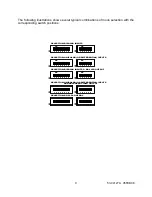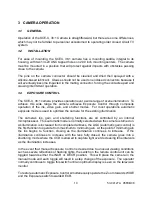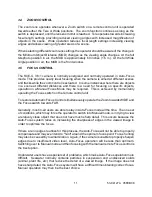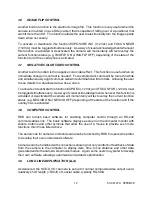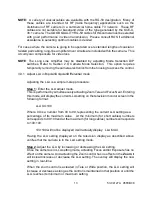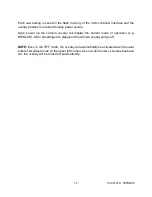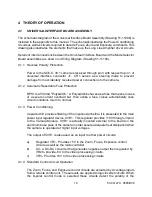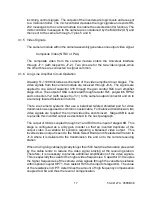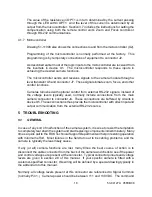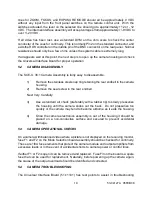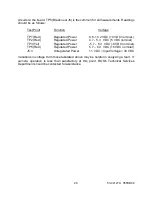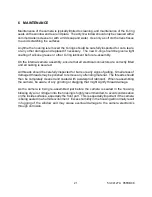
53-04127A 05FEB08
6
2.8.3 Other Configurations
SCE-X, 36:1 Cameras can be furnished with other interconnections in order to meet
customer’s requirements.
Typically, the SCE-X, 36:1 cameras are controlled using bipolar signals (+/- 12V to 1
pin) as indicated under 2.8.1 above.
Cameras can also be configured for control with unipolar or differential input signals
instead of bipolar. The following describes the modes of operation and signals
required for each one including RS-232.
Bipolar (1 line)
Most common mode since it is efficient in terms of camera
connector input pins and connecting wires required. For
example a single pin receiving a voltage provides dual control
by the polarity of the voltage. For example, +12V Focus Near, -
12V Focus Far.
Unipolar (2 line)
This mode requires two camera input pins for each function but
a single polarity for the input control voltage. For example,
+12V applied to pin 4 for Focus Near, or +12V applied to pin 9
for Focus Far.
Differential (2 line) This mode requires simultaneous application of a voltage
source (both + and -) across two camera input pins. For
example if the source (typically 12 VDC) is connected with + to
pin 4 and
– to pin 9 this causes Focus Near, and if polarity is
reversed with
– to pin 4 and + to pin 9 the Focus Far action is
actuated.
RS-232
This mode allows control of all lens functions on the basis of
RS-232 control signals from a controller external to the
camera. Additional data on RS-232 operation is included in
section 2.8.2 above and 3.6 below.
2.9
CAMERA MODE SELECTION
The SCE-X, 36:1 Camera is designed to operate in a variety of operating modes that
determine what input control signals are required and what output signals will be delivered.
The selection of operating modes is normally made at the factory and may on occasion
require changing at the customer facilities.
2.9.1 Mode Selection
If the user needs to make changes in the operating modes the camera includes an
internal Mode Selection Board assembly with a group of small switches to


